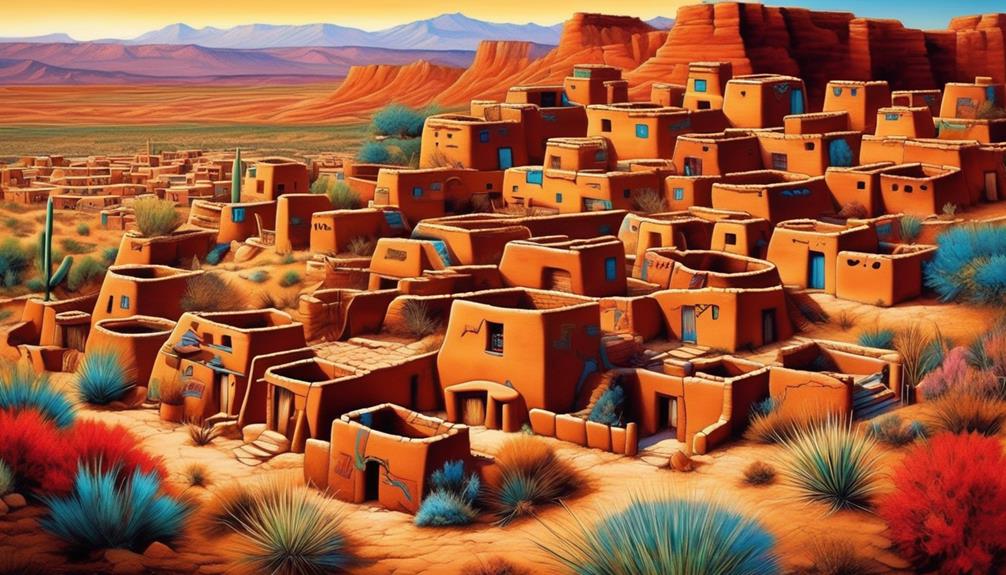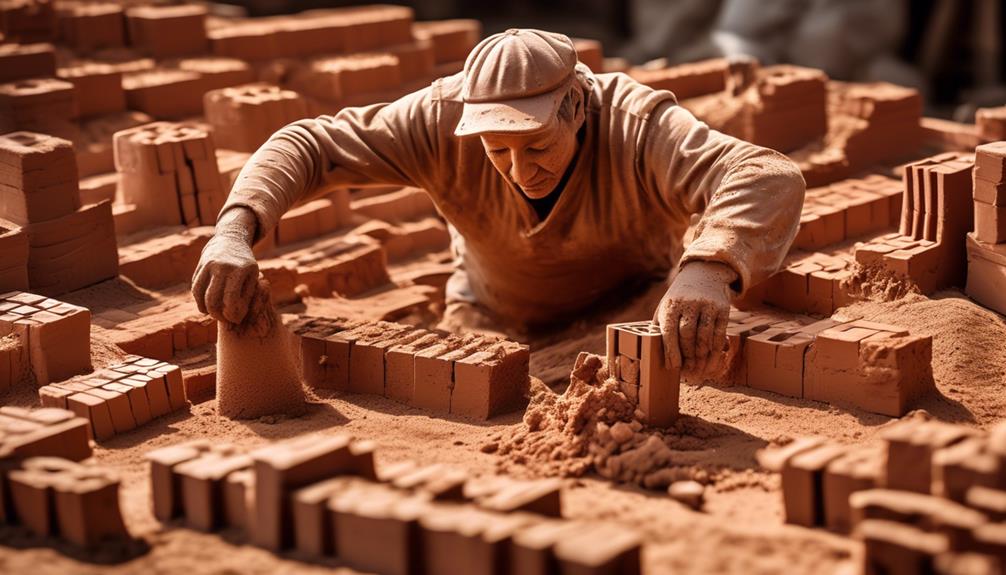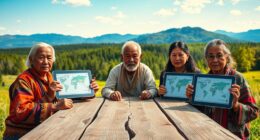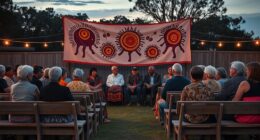When we delve into the varied landscape of Native American tribes, the Hopi tribe stands out as a beacon of cultural richness and historical significance.
But what exactly does 'Hopi' mean, and what is the origin behind this name? Delving into the depths of this inquiry unveils a fascinating tale that intertwines language, tradition, and identity, shedding light on the essence of the Hopi people.
Key Takeaways
- The name 'Hopi' is derived from 'Hopituh Shi-nu-mu,' meaning 'The Peaceful People' or 'The Peaceful Little Ones'.
- The Hopi name reflects the peaceful and harmonious nature of the Hopi people and their unique cultural traditions.
- The Hopi tribe's name signifies their resilience, commitment to self-governance, and cultural autonomy.
- Hopi ceremonies, traditional attire, and ancestral land connection are integral to preserving their cultural identity and spirituality.
The Meaning and Origin of 'Hopi
The name 'Hopi' is derived from the term 'Hopituh Shi-nu-mu,' which translates to 'The Peaceful People' or 'The Peaceful Little Ones.' This name reflects the peaceful and harmonious nature of the Hopi people.
The linguistic roots of the Hopi language trace back to the Uto-Aztecan language family, with a unique dialect that's distinct from other Native American tribes.
The cultural significance of the name 'Hopi' is deeply intertwined with the traditional beliefs and spiritual practices of the Hopi tribe. The Hopi people have a strong connection to the land and practice sustainable agricultural methods that have been passed down through generations.
Artistic expressions such as pottery, basket weaving, and kachina dolls are integral to Hopi culture, reflecting their rich artistic traditions.
Ceremonial rituals play a crucial role in the Hopi way of life, with ceremonies such as the Katsina and Snake Dance holding profound spiritual and cultural significance.
Understanding the origin and meaning of the name 'Hopi' provides insight into the deep-rooted traditions and values of this ancient and peaceful tribe.
Historical Significance of the Hopi Name

Exploring the historical significance of the Hopi name reveals the enduring cultural legacy and ancestral heritage of this indigenous tribe, shedding light on the intricate tapestry of their traditions and beliefs. The Hopi name holds profound historical significance, encompassing the tribe's journey through centuries of resilience, preservation, and spiritual connectedness.
- Tribal Sovereignty: The Hopi name is deeply intertwined with the tribe's assertion of tribal sovereignty, reflecting their commitment to maintaining self-governance, cultural autonomy, and the protection of sacred lands.
- Linguistic Roots: The linguistic roots of the Hopi name provide a window into the tribe's language, offering insights into the intricate meanings, nuances, and symbolism embedded within their traditional names and oral histories.
- Cultural Continuity: The historical significance of the Hopi name underscores the tribe's unwavering dedication to preserving their cultural identity, spiritual practices, and ceremonial customs, serving as a testament to their enduring legacy.
The historical significance of the Hopi name not only enriches our understanding of the tribe's cultural heritage but also emphasizes the importance of respecting and honoring indigenous communities' rights to self-determination and cultural preservation.
Cultural Traditions of the Hopi People
Cultural traditions deeply embedded within the Hopi people's way of life serve as a testament to their enduring heritage and rich cultural legacy. Hopi ceremonies play a central role in the preservation of their cultural identity. These sacred rituals, such as the Hopi Snake Dance and the Powamu ceremony, are deeply symbolic and are passed down through generations, reinforcing the community's spiritual connection to the land and the natural world.
Traditional attire worn during these ceremonies, including intricate woven garments and vibrant kachina masks, reflects the artistic expression and craftsmanship that have been integral to the Hopi way of life for centuries.
The Hopi people's cultural traditions are deeply intertwined with their spiritual beliefs and their close relationship with the environment. Through their ceremonies, the Hopi honor their ancestors, seek blessings for their community, and maintain harmony with the natural world. Their commitment to preserving and practicing these rituals demonstrates the resilience and perseverance of the Hopi people in safeguarding their cultural heritage amid modern challenges.
Connection to the Land: Hopi Tribe

Deeply rooted in the landscape of the American Southwest, the Hopi Tribe's connection to the land shapes their cultural practices and spiritual traditions. The ancestral land connection of the Hopi tribe is a profound and sacred bond that has been nurtured over countless generations. This enduring relationship with the land is integral to the tribe's identity, guiding their traditional land rituals and ceremonies, and fostering a deep sense of belonging and responsibility.
The indigenous land stewardship practiced by the Hopi tribe reflects an unwavering commitment to preserving the natural environment and maintaining the delicate balance between human existence and the earth.
The Hopi people's connection to their ancestral land evokes a deep sense of reverence and gratitude, instilling a profound appreciation for the land's bountiful gifts and inherent wisdom. This connection fosters a profound spiritual connection, weaving a tapestry of cultural significance and reverence for the natural world.
The traditional land rituals performed by the Hopi tribe serve as poignant expressions of their enduring bond with the land, reinforcing the intrinsic value of their ancestral heritage and the sacredness of the earth.
Understanding the Heritage of Hopi Tribe
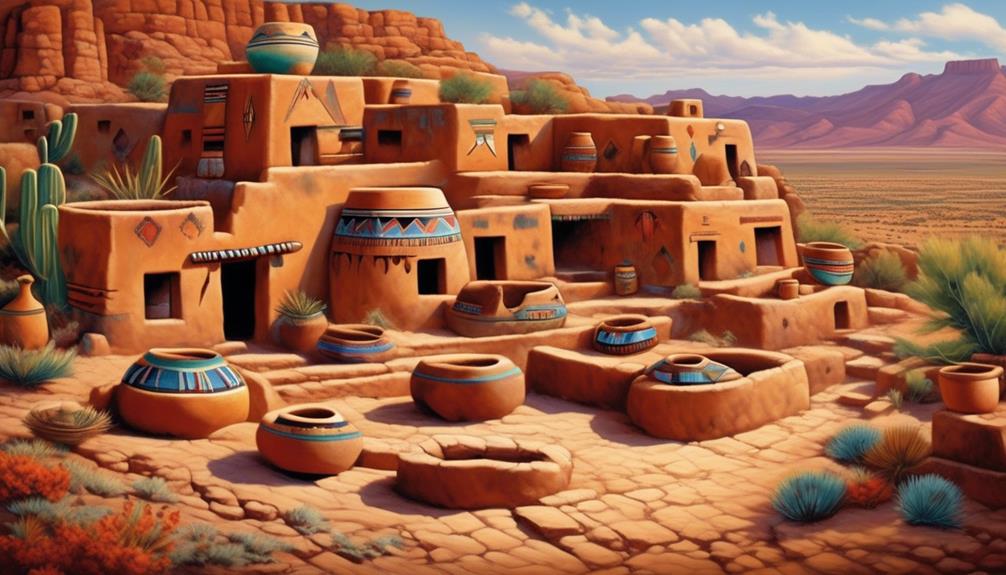
The enduring bond of the Hopi Tribe with their ancestral land is foundational to understanding their rich heritage, reflecting a profound connection that shapes their cultural practices and spiritual traditions. Heritage preservation is paramount to the Hopi people, as it encompasses the transmission of traditional knowledge, language, arts, and crafts from one generation to another. The Hopi Tribe is dedicated to maintaining and sharing their heritage, ensuring that it remains vibrant and relevant in the modern world.
Tribal sovereignty is central to the preservation of the Hopi Tribe's heritage. It empowers the tribe to govern itself, make decisions about their cultural resources, and protect their ancestral lands. This sovereignty allows the Hopi people to continue their traditional ceremonies and rituals, safeguarding their heritage from external influences. Additionally, it provides the framework for the tribe to engage in partnerships and collaborations that support their heritage preservation efforts while respecting their autonomy.
Understanding the heritage of the Hopi Tribe involves acknowledging their strong ties to their ancestral land, the significance of heritage preservation, and the central role of tribal sovereignty in safeguarding their cultural practices and traditions.
Frequently Asked Questions
What Are the Traditional Ceremonies and Rituals of the Hopi Tribe?
Traditional dances and spiritual practices are integral to the Hopi tribe's cultural identity. The tribe's ceremonies, such as the Niman Kachina and Snake Dance, are deeply rooted in their belief system and serve as a means of connecting with their ancestors and the spirit world.
These rituals are meticulously performed, often involving intricate costumes and symbolic movements. They play a vital role in preserving the tribe's heritage and maintaining their spiritual connection to the land.
How Does the Hopi Tribe Govern Itself and Make Decisions?
In tribal governance, the Hopi tribe upholds a unique decision-making process rooted in tradition and consensus. Our tribe's governance involves a council of elected leaders who work collaboratively to address community needs and uphold cultural traditions.
Decisions are made through discussions and seeking input from community members. This approach fosters unity and ensures that the needs and values of our tribe are respected and upheld in all governing matters.
What Are the Primary Sources of Income for the Hopi People?
Farming forms the backbone of the Hopi economy, with corn, beans, and squash being the primary crops.
Tourism also plays a significant role, as visitors flock to experience the rich cultural heritage and traditional crafts of the Hopi people.
These two sources of income sustain our community, providing economic stability while preserving our ancestral traditions.
What Are Some Common Misconceptions About the Hopi Tribe?
Common misconceptions about the Hopi tribe often stem from misunderstandings of their cultural practices. Many mistakenly believe that all Native American tribes share similar traditions, but the Hopi have unique customs and beliefs.
It's important to recognize that generalizing Native cultures can perpetuate stereotypes and oversimplify their rich heritage. By learning about specific tribes like the Hopi, we can appreciate their distinct contributions to the diversity of Native American cultures.
How Has the Modern World Impacted the Traditional Way of Life for the Hopi People?
In our modern world, technology has significantly impacted the traditional way of life for the Hopi people. While it has brought benefits like improved communication and access to resources, it has also posed challenges to cultural preservation.
The rapid changes and influences from the outside world have prompted efforts to balance embracing new advancements with safeguarding our traditions. This has led to a deepening commitment to preserving our cultural heritage amidst the evolving global landscape.
Conclusion
In conclusion, the name 'Hopi' holds deep historical and cultural significance for the Hopi people.
Despite being a small tribe, the Hopi have preserved their unique traditions and connection to the land for generations.
Some may question the relevance of learning about a specific tribe, but understanding the heritage of the Hopi tribe allows us to appreciate the diversity and richness of indigenous cultures, fostering a greater sense of empathy and respect for all peoples.
